Search Products
Instructions and Information on Model
Air Cooler / Enclosure & Contents:
The convection coefficient for the inside of the enclosure is assumed to be 20 W/m^2/K. The external convection coefficient is assumed to be 10 W/m^2/K. It is assumed there is no air exchange with the air external to the enclosure, no solar loading, and no ongoing condensation is occurring inside the enclosure (that will increase the heat load). Remember that door seals and structural members the bridge the box wall will increase the passive losses. These are not included in the analysis, but you can increase the estimate of the amount of heat generated inside the enclosure to account for these losses.
Remember that ANY air leak between the enclosure and the external enclosure will be an additional heat load, and often this is a very significant heat load. First, the incoming air is warm and must be cooled (additional sensible heat load). In addition, if there is moisture in that air, and that moisture will be condensed as the air is cooled, then this is an additional heat load (latent heat of condensation/vaporization). That condensation heat load is in addition to the amount of cooling required to lower the air temperature, and can be much larger than the sensible heat load required for cooling the air / enclosure. Condensation heat loads are not included in the calculations, so if you can not prevent this from occurring we suggest that you calculate the condensation heat load separately and add this in as additional heat to be removed from the enclosure.
When entering the amount of heat generated inside the enclosure you should include the heat being generated by the power supply. Of course the preferred option is to keep the power supply outside of the enclosure. If the power supply is located inside the enclosure a more efficient cooler such as the AC-140 is beneficial. Because different coolers will require different power supplies and put different amounts of heat inside the enclosure, this can be an iterative process and your inputs only valid for a single model of cooler. If calculating this is an issue you can always call or email TE Technology.
Cold Plate / Solid:
The cooled object is assumed to be isothermal, and at the same temperature as the cold plate. It is assumed that no ongoing condensation is forming on the cooled surfaces (that will increase the heat load).
The additional surface area of the cooled portion of the cold plate is not included heat load calculation. These surfaces should be insulated. To account for this surface area in the calculations add in an additional amount of surface area to the cooled object dimensions.
Remember that there will be some temperature difference across the thermal interface from the cold plate to the object to be cooled. For more accurate calculations, calculate this temperature difference and recalculate with a cooler cold plate temperature to account for this difference.
Liquid Reservoir:
The calculator determines the results assuming 100% water is being used in the liquid exchanger, and the flow rate of the water is 1.6 liters per minute. Lower flow rates will reduce the cooling. Other fluids will generally reduce the thermal performance and may be harmful to exchangers that use epoxy in the liquid exchanger. The LC-SSX1 uses a single piece of stainless steel tube as the wetted surface and is more resistant to damage from varying fluid types, so use this exchanger if in doubt.
Be sure to add in the heat being generated from the pump. To be safe, assume 100% of the input power will turn into waste heat that needs to be removed by the cooler.
The additional surface area of the pump and tubing is not included in the calculations. These surfaces should be insulated. To account for this surface area in the calculations add in an additional amount of surface area to the reservoir dimensions.
General:
All calculations are based on performance in standard atmospheric conditions. Refer to the Thermoelectric Cooling Assembly (TCA) instruction manual for further details on product usage. When multiple coolers are recommended more than one controller and power supply maybe needed. Always operate the controllers and power supplies within their rated limits.
All calculations and cooler recommendations are based on steady-state temperatures.
The heat load associated with condensing water from the atmosphere on to cooled surfaces is not calculated. It is assumed that the cooled surfaces will use insulation that is thick enough to prevent this.

